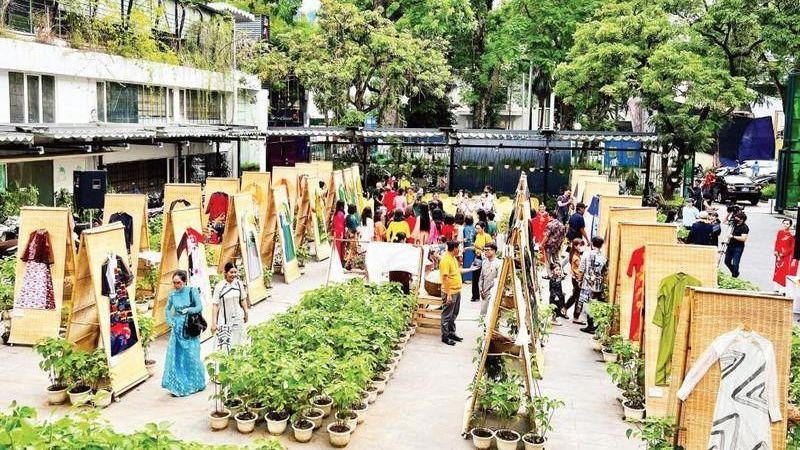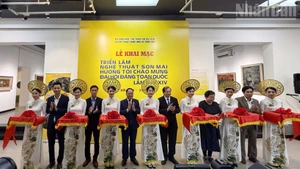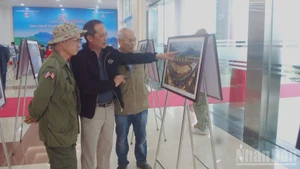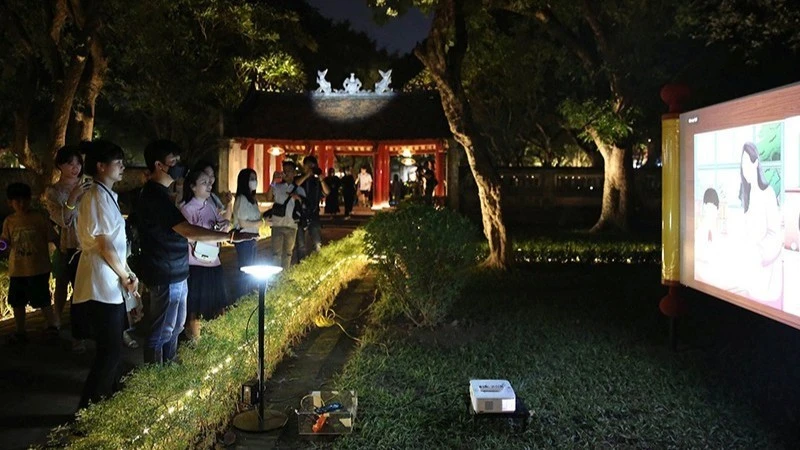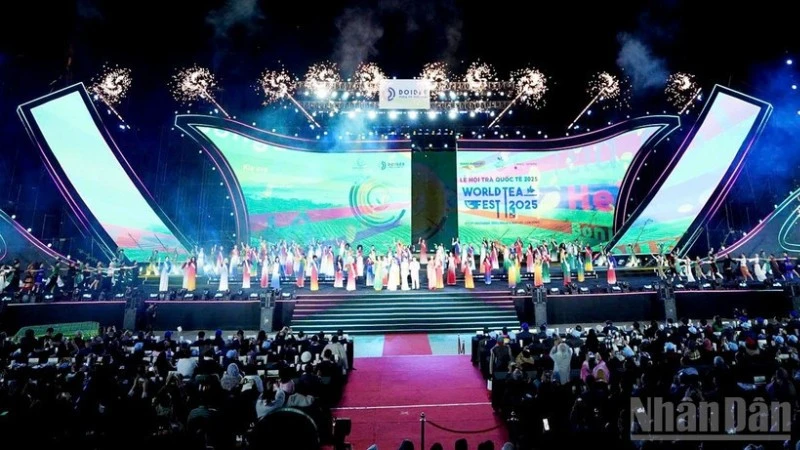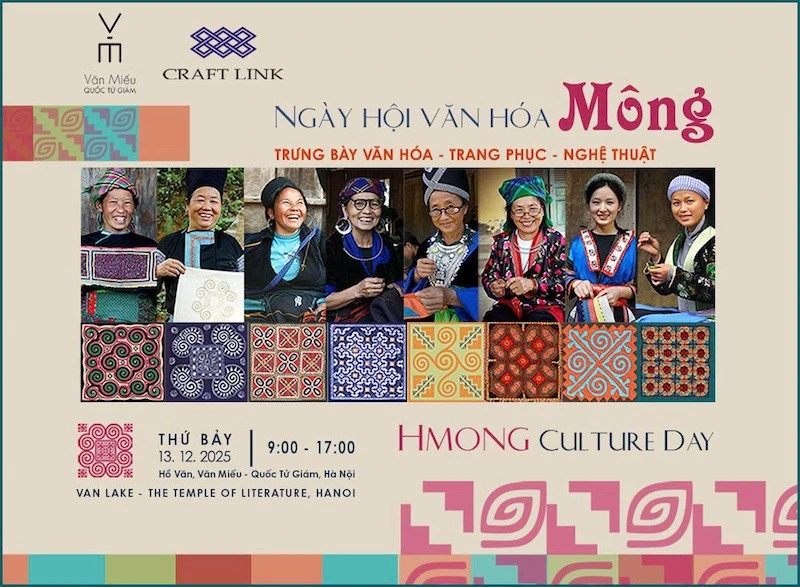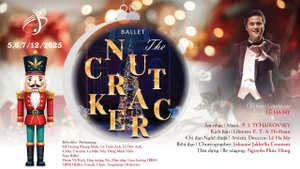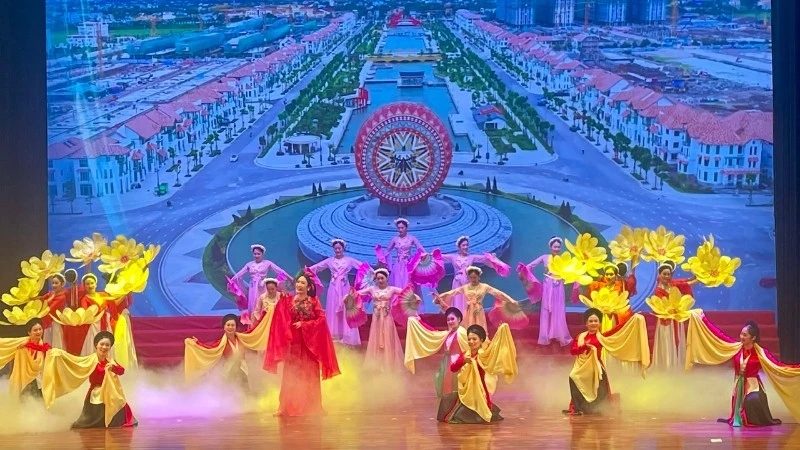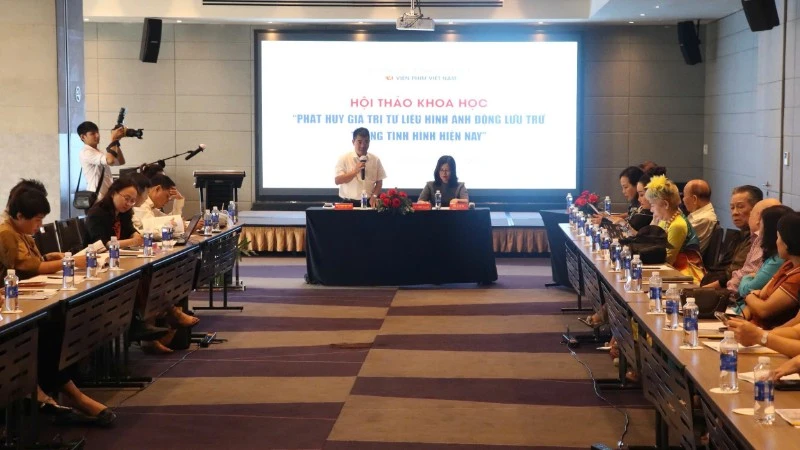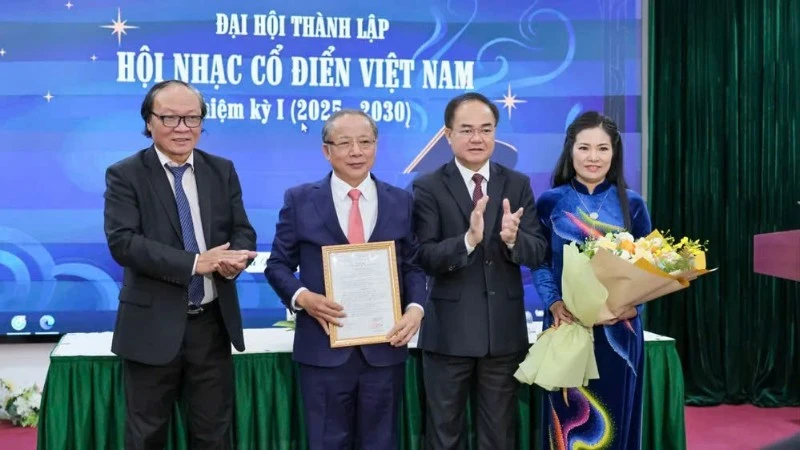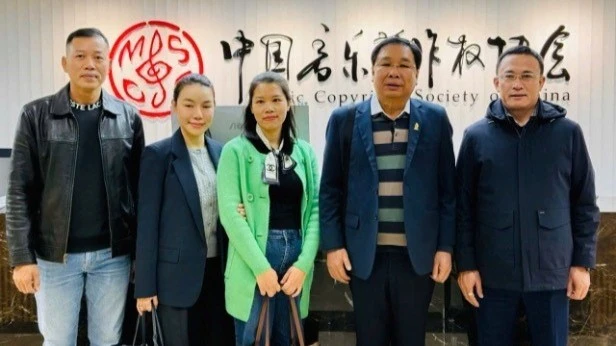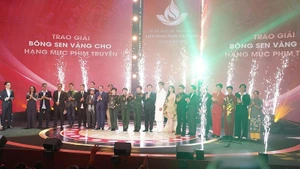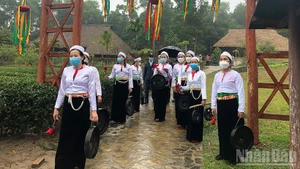Amidst thousands of lush green thorns in the courtyard of the Vietnam Women's Museum, the colourful Ao Dai designs stand out against rustic and eco-friendly bamboo blinds. The exhibition has attracted viewers of all ages and professions because Ao Dai has long been not only a type of costume but also a cultural product which is present in many activities of life.
Viewers have the chance to admire many natural and cultural heritages of Vietnam through various collections including “Canh buom Quang Ninh” (Sails of Quang Ninh), “Vinh Ha Long” (Ha Long Bay), “Phong Nha – Ke Bang” (Phong Nha – Ke Bang), “Rung truc Yen Tu” (Yen Tu Bamboo Forest), “Nha nhac cung dinh Hue” (Hue Royal Court Music), and “Tho cam dan toc Tay – Dao” (Brocade of Tay – Dao ethnic minority groups). In addition, there are collections inspired by special professions and characters, such as the image of frontline forces against the COVID-19 pandemic, soldiers helping people, miners and marine soldiers.
The images have been expressed through many different art forms, but they are still unique and humane through Ao Dai patterns. The displayed designs were created by 20 famous domestic and foreign designers, such as Minh Hanh, Ngoc Han, Cao Minh Tien, Tran Thanh Man, Hoai Nguyen, Giang Doan, Phuong Thao, Tran Thien Khanh and Diego Chula (from Spain). They were shown in various cultural events, including the 2020 Quang Ninh Ao Dai Festival, the 2019 Hue Festival and the programme entitled “White blouse angels” in 2021.
Ao Dai collections are artworks containing passion, enthusiasm and great creativity for the national cultural heritage. I am very impressed with the majestic and poetic natural beauty of the country and the image of benevolent Vietnamese people through the designs.
Vice President of the Vietnam Women’s Union Ton Ngoc Anh
Designer and Miss Dang Thi Ngoc Han expressed her honour of contributing her Ao Dai collection titled “National Special Relic Sites” which shows not only beautiful scenes but also the heroic history and cultural identity of the country, to both domestic and international visitors.
As a special guest at the exhibition, Laura Fontan, co-founder of the Chula brand and wife of late designer Diego Chula, introduced Ao Dai designs with traditional forms, combined with modern patterns. Ao Dai has also helped the Spanish designer’s family be attached to Vietnam for 17 years. Thanks to their impressions from a trip to Vietnam, they decided to stay in the country and build a famous fashion brand, which uses only Vietnamese materials such as silk and brocade.
Designer Minh Hanh also spoke of several events honouring Ao Dai and handicrafts of Vietnam in 2023, such as the Vietnamese silk and fashion show in Como city (Italy), which is famous for silk craft and presenting an additional 1,000 Ao Dai designs to the Vietnam Women’s Museum.
Notably, visitors to the exhibition will have the chance to learn and experience the whole process of making silk, performed by artisans from Nam Cao silk craft village, in Kien Xuong district, Thai Binh province. Once thought to be lost, the Nam Cao traditional weaving has gradually recovered, becoming a source of raw materials for many high-end fashion brands.
According to many experts, Vietnamese Ao Dai has a long history of formation and development. It is a traditional costume in the minds of all Vietnamese and has been recognised by a large number of international tourists and friends. Ao Dai also appears in many religious or artistic practices.
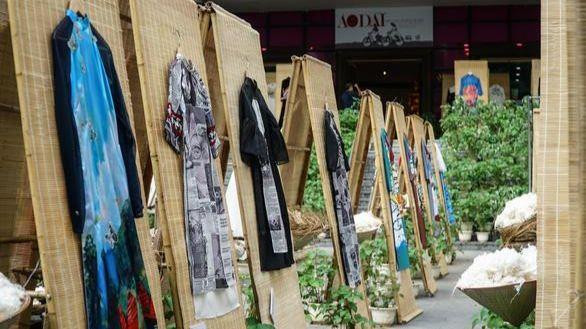 |
| Several Ao Dai designs at the exhibition (Photo: tuoitre.vn) |
While Ao Dai for women honours tenderness, grace and elegance, the designs for men are solemn. In addition to the traditional and core values, this type of costume has been created constantly in terms of designs, materials and accessories and added new values to suit modern society.
Over the past years, the Vietnam Women's Museum and many designers have jointly held many meaningful events to preserve and promote the value of the traditional Ao Dai. The exhibition “Ao Dai on the heritage path” continues to bring Ao Dai closer to the public. Immediately after the exhibition, the collections will be donated to the museum and they will continue to tell more stories to spread the love of Ao Dai and Vietnamese culture to international friends.
